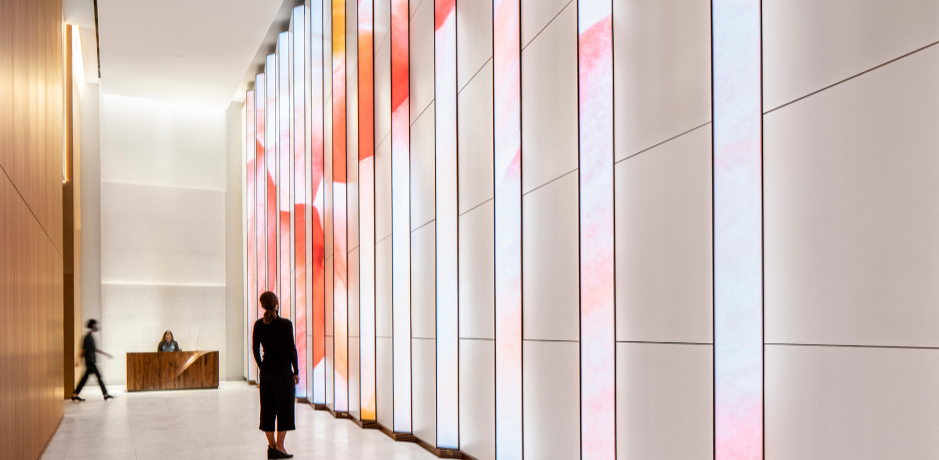The Future of Workplace Experience Is Here: How AI Is Transforming Spaces

Delos, New York. Photo by Robert Deitchler.
As published by Gensler, written by Greg Gallimore
In just the past couple years, the generative AI landscape has evolved at a rapid clip. Since ChatGPT’s public launch in November 2022, the technology has continued to evolve and we’ve gone from considering generative AI as an experiment in natural language processing to a deeper understanding of how to use it — whether as text-based prompts or image-trained models such as Midjourney — as an emerging tool not only in the design process, but also as a creative and personalized medium for bringing new vibrancy and interactivity to finished architectural spaces.
AI is already revolutionizing how we design and interact with physical spaces. As breakthroughs continue to accelerate, Gensler has embraced AI in various forms, with effects that are transforming workflows, modeling, sustainability efforts, and immersive spaces.
With the deft hand of creatives, designers, and technologists, the advanced integration of AI into physical environments has the potential to reimagine the spaces where we live, work, and play to become more efficient, connective, and inspiring.
88 Kearny, San Francisco. Photo by Jason O’Rear.
Here’s a look at how some of these transformations are taking place:
Creating Dynamic, Personalized Experiences With Generative AI
Remember the last time you walked past a bulletin board filled with outdated announcements? It’s easy to ignore static information, but what if that bulletin board could not only change its content dynamically but also tailor messages to the individuals, teams, or groups using a particular space so they have the most relevant and timely information?
Generative AI is transforming static environments into vibrant, personalized spaces. Imagine a corporate lobby where digital art changes based on visitors’ profiles or information displays that update in real-time to reflect the latest news and data. This technology captures attention and imagination, making every visit a unique experience.
Generative art is already making waves in interior spaces, not just for its ability to be bespoke to individuals, but also because of its capacity to infinitely evolve. Media architecture, or the embedding of digital media as a material in the built environment, has the ability to constantly surprise and awe visitors with new changing content.
We are using generative AI to create spaces that feel alive. By continuously adapting to new information and user interactions, these environments remain engaging and meaningful, ensuring people never experience the same space twice with experiences that are hyper-relevant.
Continue reading...The Future of Workplace Experience Is Here: How AI Is Transforming Spaces (gensler.com)
Recommended Content
AV for Sports Industry in India with Cricket Prospective







Please sign in or register for FREE
If you are a registered user on AVIXA Xchange, please sign in
Thnaks for sharing.